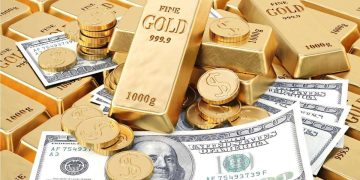The collectibles market is no stranger to sudden and dramatic price surges—particularly when it comes to “underrated” or niche categories that were once overlooked or undervalued. These unexpected spikes often puzzle even seasoned collectors and investors. Why do some objects, once ignored, become hot commodities almost overnight? What signals in the market should collectors be watching to anticipate these changes? This article delves deeply into the multifaceted reasons behind these rapid value escalations and how savvy collectors can interpret the subtle cues that precede them.
1. Understanding the Nature of “Underrated” Collectibles
Before analyzing why certain categories explode in value, it’s crucial to understand what constitutes an “underrated” collectible. These are items or categories that have historically received limited attention from mainstream collectors, auction houses, and institutions. Reasons vary—from lack of scholarship, limited visibility, cultural biases, or market inertia.
Examples include regional folk art, niche scientific instruments, certain types of ephemera, or artifacts from underrepresented cultures. Their market tends to be illiquid, pricing opaque, and public awareness low. This creates fertile ground for volatility and sudden reassessment.
2. Shifts in Cultural and Academic Interest
One of the strongest drivers behind the sudden rise of a previously underrated collectible is a shift in cultural or academic interest. When respected scholars publish new research or institutions mount exhibitions focusing on neglected categories, they generate fresh appreciation and credibility.
For example, the recent surge in African contemporary art follows decades of increased scholarship and museum acquisitions. Similarly, previously overlooked artists or cultural objects gain recognition as society reassesses historical narratives, identity, and inclusion.
Collectors who monitor academic publications, museum programming, and grant-funded research can anticipate these trend shifts and position themselves accordingly.
3. Influential Endorsements and Celebrity Collectors
The involvement of high-profile collectors, celebrities, or influential tastemakers can act as a catalyst. When a well-known figure champions a niche category, it instantly elevates its visibility and desirability.
This endorsement often ripples through media coverage, social platforms, and dealer networks, drawing attention from a broader collector base. The influx of new buyers increases demand, rapidly driving prices upward.
Savvy collectors track auction records and collector profiles, identifying emerging endorsements before the market fully reacts.
4. Market Saturation and Search for Novelty
As mainstream collecting categories become saturated—where supply struggles to keep pace with demand—buyers naturally seek new frontiers. This “search for novelty” diverts capital into less-explored fields.
Niche collectibles, with their smaller, less competitive markets, offer untapped potential and sometimes more accessible price points. Early adopters reap the benefits when these markets expand.
Understanding the broader macro trends and collector behavior helps predict which overlooked segments might gain momentum next.
5. Economic and Geopolitical Factors
Global economic shifts and geopolitical developments also influence collectible markets. For example, currency fluctuations can make certain regional objects more attractive to international buyers.
Similarly, political stability or instability affects access, provenance clarity, and export regulations. When regions open up or markets liberalize, previously inaccessible collectibles enter the global stage, causing rapid value reassessment.
Collectors attentive to international affairs and trade policies gain advantages in anticipating these opportunities.
6. Technological Advances in Research and Authentication
Recent technological innovations in scientific analysis, imaging, and provenance tracking have transformed how collectors evaluate authenticity and condition.
Underrated collectibles often suffer from doubts about attribution or legitimacy. When new methods verify their authenticity or reveal hidden features, market confidence surges.
For instance, improved dating techniques or material analysis can authenticate long-disputed items, leading to sudden market enthusiasm.
7. Social Media and Digital Communities
Digital platforms and social media have democratized information flow, allowing niche collecting communities to form and flourish online.
Platforms like Instagram, specialized forums, and dedicated collector groups create buzz and educate potential buyers. Viral posts or influencer endorsements can ignite interest in categories that were previously obscure.
Collectors plugged into these networks often gain early insights into emerging trends, before traditional channels catch up.

8. Auction House Strategies and Market Creation
Auction houses increasingly curate thematic sales spotlighting undervalued categories to stimulate interest. Strategic marketing campaigns, expert-led previews, and targeted outreach create demand where none existed before.
By spotlighting rare items or previously neglected areas, they cultivate new buyer bases and raise price expectations.
Monitoring auction calendars and promotional materials can help collectors anticipate where the next surge might occur.
9. Scarcity, Condition, and Provenance
At the core of any collectible’s value are fundamental principles of scarcity, quality, and provenance. Many underrated categories become attractive only after certain conditions are met—such as the discovery of key specimens, improved condition through restoration, or the establishment of strong provenance.
Collectors who research deeply and access private collections or archives can identify these “hidden gems” before they reach wider audiences.
10. The Role of Institutional Acquisitions
Museums, universities, and foundations play a crucial role in legitimizing and popularizing categories. Their acquisitions often signal confidence and increase desirability among private collectors.
Institutional exhibitions and publications further reinforce this effect. Being aware of which institutions are collecting what provides valuable market foresight.
11. Psychological and Social Factors in Collecting
The dynamics of human behavior also contribute. Fear of missing out (FOMO), herd mentality, and status signaling can accelerate price increases once a niche category begins to gain traction.
Understanding these psychological drivers allows collectors to make more measured decisions rather than reacting emotionally to hype.
12. How to Decode Market Signals and Act Strategically
To capitalize on sudden surges in underrated collectibles, collectors need to:
- Monitor scholarly output: Journals, exhibitions, and conferences.
- Track auction results and dealer inventories closely for unusual activity.
- Engage with specialist networks and digital communities.
- Follow institutional acquisition trends and publications.
- Stay informed about geopolitical and economic developments.
- Assess provenance, condition, and authenticity rigorously.
- Evaluate social media and influencer endorsements critically.
- Maintain a long-term perspective to avoid speculative bubbles.
Conclusion
The rapid escalation in value of certain underrated collectibles is not random but rooted in a complex interplay of cultural, economic, technological, and social factors. By understanding and decoding these market signals, collectors can anticipate trends, make informed acquisitions, and avoid pitfalls.
The key lies in vigilance, research, relationship-building, and strategic patience. Those who master these elements gain access to hidden opportunities that can transform their collections and generate significant returns.
In a market where yesterday’s obscurity becomes tomorrow’s sought-after treasure, reading the signals early is the ultimate advantage.

















































